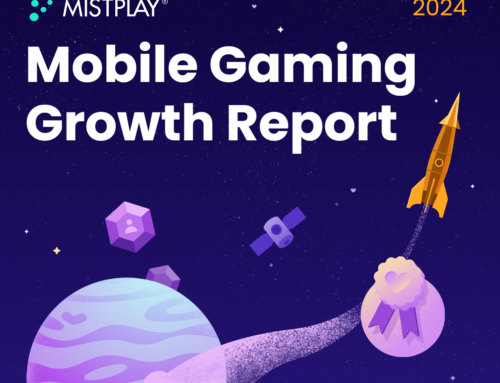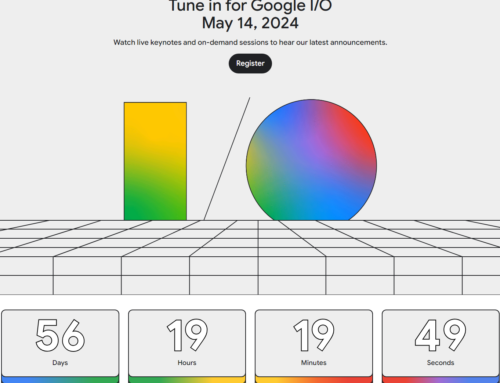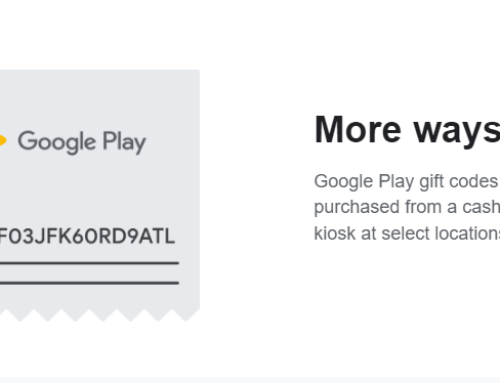Developing an app, releasing and marketing it to become popular is the most difficult part. No matter if you’re a sole dev, indie studio or large team, getting from nothing to having an app live and popular is the toughest goal to achieve with many stressful times and endless work hours. So why do it then? Well, luckily there are rewards and aside feeling good for yourself when your app is used by thousands there’s also monetary rewards. App monetization is the rewarding part in all this process and there’s no shortage of ways in which you can get money from your free/freemium app or game. In fact there are close to 100 different mobile ad networks you can use to monetize apps without charging users a free for the app itself.
Are you an app developer? I can help you promote your app/game by submitting app review requests to 140+ Android review sites, details here: 140+ App review requests submission
Developing an app, releasing and marketing it to become popular is the most difficult part. No matter if you’re a sole dev, indie studio or large team, getting from nothing to having an app live and popular is the toughest goal to achieve with many stressful times and endless work hours. So why do it then? Well, luckily there are rewards and aside feeling good for yourself when your app is used by thousands there’s also monetary rewards. App monetization is the rewarding part in all this process and there’s no shortage of ways in which you can get money from your free/freemium app or game. In fact there are close to 100 different mobile ad networks you can use to monetize apps without charging users a free for the app itself.
Before delving into different mobile ad networks and their stats, I do have a few recommendations for app devs:
- Don’t include ads in your app/game right from the first release unless you know for sure that the app/game will get thousands of installs right from launch day. A common mistake I see is devs including ads (even offer wall or interstitial ones, thus intrusive) in newly launched apps/games that barely have any installs at all.
- If you have an app that has at least 500 active users daily (preferably 1000) then you should include ads in an update, but don’t do it if you barely have any DAU (daily active users).
- Devs justify including ads right from launch day (talking about non-premium apps here) because “what if the app catches on”. Well if it does catch on, you can later include ads since existing users will receive the update, but it is much more probable for your app to go unnoticed than being that hit you’re waiting for.
- If you’re a “mass developer”, meaning you release dozens of apps and just keep them coming, the same strategy would give you more bang for the buck. Release the apps and only monetize them when you reach a threshold of more than 500 daily active users (all apps combined).
- Don’t overdo it. Start small, analyze, then adjust. If you include multiple ads at once you won’t have something to compare with. But if you include them incrementally there’s always something to compare with. I’m not talking here only about total revenue, but also about how your DAU is affected. Try to find a balance between the revenue and how your app usage varies.
I stress on not including ads from the start because that reduces the chances of your app/game going viral. Users are annoyed by ads, they expect to get something and offer nothing in return. If you leave ads out from the beginning, they are more likely to recommend the app/game to their friends rather than installing something that has an offer wall every frigging time you start a level.
Back to the mobile ad networks, even if there are 100 of them the 10 most popular ones account for almost 70% of all the ads served. When you decide to go with a particular mobile ad network my suggestion is to take these elements into account:
- How popular is that particular ad network (the more popular it is, the better your ad fill rate)
- What type of ads you would like to run (i.e. video, native)
- What platforms are supported out of the box
- How often do they pay you and what payment methods are available
There are also ad networks targeting only games, some only offer video ads, thus a bit of research is needed before choosing one. Using data from various sources I compiled a comparison table with the top 20 mobile ad networks which you can analyze below to help you decide:
| Ad Network | Usage (% of all apps) | Average eCPM (US) | Average CTR (US) | Supported platforms | Ad types | Campaign types | Minimum payout | Payment methods |
|---|---|---|---|---|---|---|---|---|
| Epom Apps | 0.02 | 1.2 | 0.013 | Android, iOS | Interstitial, Native, Banner | CPC, CPM, CPI | 50 | Wire, Check, Paypal |
| AdMob | 0.467 | 0.4 | 0.0066 | Android, iOS, wp8, Unity, Cocos2dx | Interstitial, Video, Native, Banner | CPC, CPM, CPI | 100 | Wire, Check |
| Startapp | 0.0323 | - | - | Android, iOS, Unity | Interstitial, Native, Banner | CPI, CPC | 50 | Wire, Paypal, Check |
| LeadBolt | 0.0112 | - | - | Android, iOS, Windows | Video, Banner, Text, Audio | CPA, CPC, CPE, CPI, CPM, CPV | 100 | Wire, Paypal, Payoneer |
| Chartboost | 0.048 | 0.59 | 0.0314 | Android, iOS, Unity, Cocos2dx, wp8, Amazon, Air | Interstitial, Video, Native, Banner | CPI, CPC, CPCV, CPM | 75 | Wire, Paypal, Checks |
| Unity Ads | 0.029 | 1.68 | 0.0031 | Android, iOS | Video | CPI, CPC, CPCV | 100 | Wire |
| AdColony | 0.0235 | 2.29 | 0.009 | Android, iOS, Unity, Air | Interstitial, Video, Native | CPM, CPI, CPCV | 100 | Wire, Paypal |
| MoPub | 0.0253 | 0.64 | 0.0129 | Android, iOS, Unity | Interstitial, Video, Native, Banner | CPM, CPC, CPA with RTB | 100 | Wire, Paypal |
| InMobi | 0.0287 | 1.3 | 0.0952 | Android, iOS, Unity, Cocos2dx, Marmelade, Corona, Air | Interstitial, Video, Native, Banner | CPM, CPC, CPI | 50 | Wire, Paypal |
| AppLovin | 0.0185 | 1.16 | 0.073 | Android, iOS, Amazon | Interstitial, Video, Native, Banner | CPC, CPI | 20 | Wire, Paypal |
| Vungle | 0.0122 | 4.86 | 0.014 | Android, iOS, Microsoft, Unity | Video | CPI, CPC, CPCV | 50 | Wire, Paypal, Checks |
| Tapjoy | 0.012 | 2 | 0.0116 | Android, iOS, Unity, Cocos2dx, Air | Interstitial, Video | CPC, CPI, CPCV | 250 | Wire, Paypal, Checks |
| Millennial Media | 0.02 | 0.08 | 0.0026 | Android, iOS | Interstitial, Video, Native, Banner | CPC, CPI, CPM | 50 | Wire, Paypal, Checks |
| mobileCore | 0.018 | - | - | Android, iOS, Windows, Unity, Air | Interstitial, Video, Native, Banner | CPC, CPI, CPM, CPV | 200 | Wire, Paypal |
| Amazon Mobile Ads | 0.0152 | - | - | Android, iOS, Fire OS, Unity, Air | Interstitial, Banner | CPM | 100 | Wire, Check |
| HeyZap | 0.0132 | - | - | Android, iOS, Unity, Cocos2dx, Air | Interstitial, Video, Native, Banner | CPI | 100 | Wire, Paypal, Bitcoin |
| RevMob | 0.0096 | - | - | Android, iOS, Unity, Cocos2dx, Air | Interstitial, Video | CPC, CPI, CPM | 50 | Wire, Paypal, Payoneer |
| MobFox | 0.0087 | - | - | Android, iOS, Windows | Interstitial, Video, Native, Banner | CPC, CPI, CPM, CPV | 50 | Wire, Paypal |
| AirPush | 0.0087 | - | - | Android, iOS, Windows, Blackberry | Banner, Video, Push, Dialog, App wall | CPA, CPC, CPE, CPI, CPM, CPV | 40 | Wire, Paypal |
| Supersonic | 0.005 | - | - | Android, iOS, Unity | Interstitial, Video, Banner | CPI, CPCV | 100 | Wire, Paypal, Payoneer |
| Smaato | 0.004 | - | - | Android, iOS, Windows, Blackberry | Interstitial, Video, Native, Banner | CPM | 100 | Wire, Paypal |
Some details regarding the data in the table above and its sources:
- Usage: this shows a percentage of how many Android apps used that particular ad network. This data comes from AppBrain, an appstore that analyzes the listed apps and has pretty much many of the apps that are on Google Play. Unfortunately there’s no official resource for this from Google.
- Average eCPM/Average CTR: You must use the info in those 2 columns just to have an overall idea, as that’s not very accurate. The data comes from AppoDeal, an ad mediation platform that analyzes the ads passing “through” it and offers average data depending on the source. However the eCPM varies drastically based on the ad format and ad campaign, as for instance it’s clear that a CPC campaign will have a lower eCPM than a CPI one. So just use that info to have an idea rather than take a decision. Also, the average eCPM/CTR is shown for the first Ad Campaign that shows in the column (i.e. if CPC is first, then the average is for CPC campaigns).
- Supported platforms: AD networks will give you an SDK to integrate but only certain platforms are supported. This shows the main OS platform (i.e. iOS, Android, Windows) but also engines such as Unity/Marmelade.
- Ad types/Campaign types. Ad formats and campaign types you can run. Don’t be scared by the acronyms, the first C is always for Cost (i.e. CPC – cost-per-click, CPM – cost-per-thousand-impressions, CPCV – cost-per-completed-view, CPI – cost-per-install).
- Minimum payout/Payment methods. This shows the minimum payout amount, so if you make less than that amount in a month it gets rolled on to the next one until you meet the payout threshold.
I also included some more details about the first 10 mobile ad networks mentioned above, usually if you have to choose one my recommendation is to use one (or more) of these 10 below.
The leader in mobile app monetization is AdMob, with a crushing 54% usage amongst all installed apps (Android). This means that a bit more than 1 in 2 installed apps that have ads, are powered by Google’s engine. It’s not shocking at all given the fact that it’s the most robust in-app ad solution.
Some of its PROs:
- Google’s technology for ad delivery, which means highly targeted ads (yes, it knows more about you than you do)
- Cross-platform, thus can be used with Android, iOS not to mention direct integration with major game engines (Unity, Cocos2d-x)
- Updated automatically when the Google Play app is updated
- Use your own custom ads or promote your own apps with house ads
The only reason not to use AdMob is if your account has been canceled for some reason, or if you want to focus on Video ads. Yes, they can do that if somehow they believe the integration with your app/game does not adhere to their (rather lengthy) ad integration policies.
https://www.youtube.com/watch?v=q2GFVIbKUmk
A new addition to the list, Epom Apps has quite an interesting approach. Instead of being a classic mobile ad network, they are actually a mobile app monetization platform. Kind of like an ad broker, you integrate the SDK in your apps and they handle the rest. Meaning they will suggest the best ad types, the best ad placements and then they will negotiate programatically the best price for a particular ad. They are working with the most major mobile ad networks (AdMob, Chartboost, Facebook, …) so if you integrate it you get acess to dozen of other mobile ad networks but without the hassle of creating individual accounts. Excellent choice for a set-it-and-forget-about-it mobile app monetization solution.
PROs:
- Ad monetization platform, with one account you get access to dozens of mobile ad networks
- 1 SDK to integrate, works with iOS and Android
- Programmatic bidding for your ad spots, with automatic ad management
- Supports native, interstitial and regular banners
- NET30 payments
I wouldn’t have realized how popular Chartboost is, given their focus on game monetization rather than general app monetization. But yet again, mobile games are way popular than apps. Their ranking is due to the fact that 16% of the Top Android Apps use it as an ad monetization solution and is integrated in 300,000 games so far (according to their site). Chartboost was founded by game devs, for game devs.
One plus this has (even over AdMob) is the fact that you as a dev can swap traffic with other devs that integrated it in their games. This way cross-promotion is a breeze.
Some of its PROs:
- Easy cross-promotions, as you can promote (for free) your new released to users of your other games
- Sell inventory directly to other devs via the direct-deals marketplace
- Detailed analytics
- Game-only ad network thus far more targeted for games
If you want to monetize a game, Chartboost is definitely worth checking.
Unity Ads is the 3rd most used app monetization platform and that popularity is due to the fact that Unity 3D is the most used game engine. Instead of focusing on offering various types of ad formats and campaign types, Unity Ads only offers cost-per click video ads. The innovation comes from the fact that those video ads are integrated with the gameplay. Most devs use this in games as an incentive, basically watch a video to get something in return (i.e. coins, items, …).
Here’s what makes Unity Ads so popular:
- Focuses only on video ads that are a natural part of the gameplay
- Integrates perfectly with the Unity 3D game engine, basically just a simple switch
- It works with other engines as well if you use their SDK
You can skip through the video as it has almost an hour but here’s how you can set up Unity Ads:
AdColony brands itself as the “leading mobile video advertising platform” so there’s no doubt on what they focus, video ads. It has an interesting approach though in how they reward you when a user views a video. Basically while you get full credit whenever a user watches a video, the reward goes down even to 0 if the users don’t interact (i.e. they don’t click to install). So basically this is more a cost-per-action-post-video type of campaign. If you get high volumes of users then it might work just fine.
What’s good about it:
- If you’re looking for quality, AdColony offers the best video ads in HD format. That might entice users to click
- Videos play instantly, so there’s no lag in loading a video ad (probably those are streamed from cache)
- Possibility to showcase apps/games on other top-ranked iOS/Android apps
Here’s a glimpse of how fast video ads are loaded in AdColony:
https://www.youtube.com/watch?v=GeuavjkAB0o
MoPub is a great choice for app monetization if you prefer to interact directly with buyers. They operate the largest real-time bidding (RTB) exchange for in-app ads. Oh and they’re so popular because in 2013 the company was acquired by Twitter. So if you want to decide what buyers advertise in your app you should choose MoPub as it gives full flexibility. This doesn’t mean you must use the Marketplace, it’s just that you can enable it.
Where it stays strong:
- Uses Twitter’s infrastructure so no worries on being down
- Integrates easy offering an open source SDK
- Offers advertisers lots of reporting, management so a fully-blown platform (happy advertisers drive ad revenue up)
Here’s an overview of MoPub:
https://www.youtube.com/watch?v=APSwVsugee8
InMobi is suitable both for gaming and non-gaming apps as an app monetization provider. Their video ads are also delivered in HD, but unlike AdColony these are broader and not gaming related only. What’s interesting about InMobi is the fact that they deliver ads directly and manage everything or you can use the InMobi exchange for some sort of real-time bidding. Basically combines the best of both worlds, direct delivery and real-time bidding.
PROs:
- Excellent visual quality for HD video ads
- Access ads directly or programmatically via InMobi Exchange
- Multiple quick integration solutions for developer platforms (i.e. Marmelade)
They have some interesting playable ads which you can see in action here:
If you’ve watched Superbad then you know who McLovin is (if you haven’t you clearly should do so) and honestly that’s the first thing I’ve thought about when seeing AppLovin. And that’s most likely what the founders thought of when launching the company in 2012. Fast forward to 2016, AppLovin is a powerful app monetization platform that’s in talks with a buyer to sell the business for $1.5 billion. Yes, BILLION.
AppLovin has the usual features you’d expect from an app monetization company however they tend to favor the marketing side of this. In fact they even brand themselves as an “mobile marketing automation” company rather than a solely ad network. What this means is they focus not on simply showing ads, but with some predicament to show what your app user is looking for. Basically they don’t want to show users annoying ads, they want to show them content and recommendations. This is done through a clever algorithm as a result of processing “100TB of data daily” according to their stats.
Instead of showing you a video of how it works how about a video that show the people behind AppLovin:
Welcome to the Vungle! Here’s another mobile ad network that focuses solely on video, unlike Unity Ads however it targets both games and non-game apps. That’s why their main campaign type is cost-per-install, meaning you get up to a few bucks everytime an user installs advertised games/apps. Just like the others it has an SDK that can be easily integrated, and comes with support for the major platforms (plus some 3rd party mediation partners such as Appodeal).
Here’s what’s nice about Vungle (aside its name!):
- They offer interactive video ads that users can engage with before continuing to install a game – this has a higher conversion rate than regular video ads especially for gamers
- You can control when the user will see ads (not only where) so you can pick the right moments for increasing conversion while staying compliant
- Advertisers can run A/B split tests in real time thus increasing their conversion and your income
- Used by some of the top players in the apps world (Ketchapp, Outfit7, Sega)
Nice video about their launch:
Tapjoy is yet another player in the increasingly-crowded mobile ad network market. The first thing I appreciate with them is that they have as a highly-visible menu item on their site “Ad Gallery”. That’s where you can go and see some past creative ad campaigns, including one from Google that caught my attention. They had a clever video ad where the user had to collect at least 6 items with a car to get 6 months free for Google Shopping – that’s clever for 2 reasons, first it entices the user to install the app to get those free months, secondly it barely resembles an ad.
Their focus is interstitial/video ads and probably the most important thing is that their ads seem to be immune to ad blockers, or at least that’s what they state. Indeed I have an ad blocker installed on my tablet and I did run a Tapjoy video ad but that was an in-game reward ad (i.e. those that say “watch this video to get more energy”).
Strong points on Tapjoy:
- Ads are interactive/engaging and don’t get blocked by ad blockers
- More than 10k premium apps use it
- Direct SDK integration
- Predictive analytics that can predict each user’s future value individually
- Sophisticated user-level segmentation
Here’s a quick overview of Tapjoy:
https://www.youtube.com/watch?v=tVB-1vhietA
Millennial Media was acquired 1 year ago by AOL for a “bargain” price of US$238 million. As a side-note, whoever had the idea to name it “Millennial” was not thinking right, I bet even he or she gets to misspell the name as it has 2 double consonants.
Anyway, back to the ad platform, this is an option for devs too even if AOL doesn’t have such a good reputation of being a forward-thinking company. They offer an SDK with direct builds for Android/iOS and you can generate a full suite of video/native/banner ads. Interesting with them is the fact that you can manage the monetization yourself or have it managed for you. They also have a real-time bidding exchange where you can directly interact with 230+ buyers and maximize your revenue.
Here’s what interesting with Millennial Media:
- Self-serve or managed monetization
- Easy to integrate SDKs
- RTB exchange
- Popular brand behind it thus access to a lot of buyers and thus high fill rate
You can see an overview of it here:
As always if you’ve worked with any of the above ad networks and want to share details with other readers feel free to do so, especially if you can share eCPM/CTR details. Not to mention that if you have other favorite mobile ad networks you can share their info in the comments.




